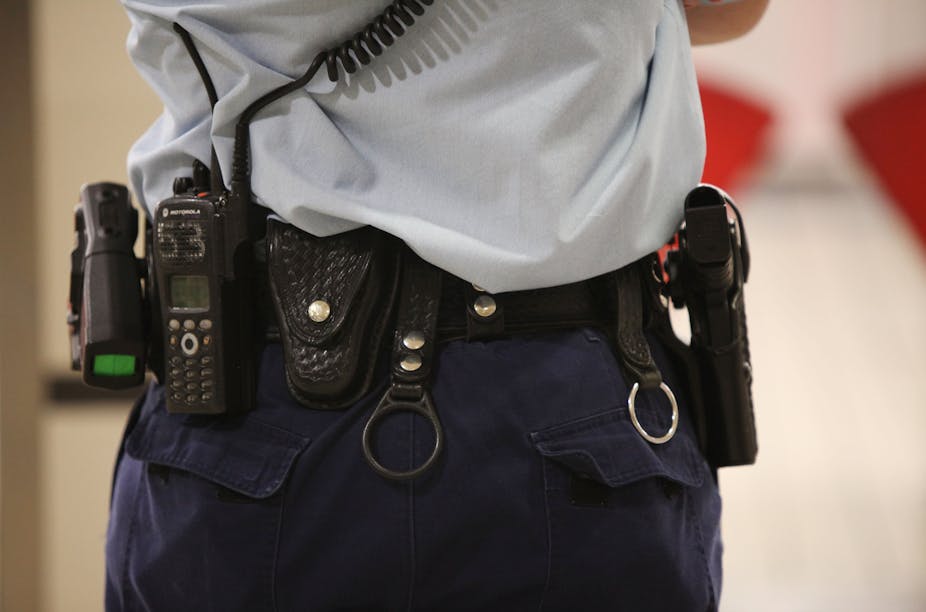“These weapons save lives. We never said they were toys.” – NSW Police Commissioner Andrew Scipione
Damning coronial findings and confronting media footage have put police use of Tasers in the spotlight. Last month, the NSW Coroner presented her findings into the death of 21 year-old Brazilian, Roberto Curti. Chased and tackled to the ground by police in Kings Cross, police used Tasers 14 times, including while Curti was lying face down and handcuffed. Police also used up to three cans of capsicum spray on him.
The coroner found that left alone there was “not a shred of evidence that he would of caused any harm”. She also criticised police for being thuggish, finding they had used excessive force, acting recklessly and dangerously.
In the same week the New South Wales Coroner made her findings, the ABC’s 7.30 aired footage of a 14 year-old Aboriginal boy tasered by Queensland police. Handcuffed and on his knees he screamed in pain and cried for “mummy” as police continued to threaten him with the Taser. He had also been sprayed with capsicum spray. A solicitor with the Aboriginal Legal Service claimed that the footage, taken from the Taser-cam, shows one of the worst cases of police brutality he has seen in his career.
In the aftermath of the coroner’s finding, police have fallen back on a key Taser myth in their defence – that Tasers save lives.
There have been a number of recommendations made about changes to training and guidelines to address the growing evidence of police abuse and to reduce the likelihood of fatalities. But the reality is that Tasers will continue to facilitate excessive use of force and police brutality, and Taser related deaths will continue, regardless of the implementation of the recommended changes.
Less than lethal?
Taser is the brand name for an electro-shock device that delivers 50,000 volts. These weapons, one of a category known generically as “less-than-lethal weapons”, have incrementally become standard issue in Australian policing since the mid 1990s.
Originally confined to specialist police, they moved into everyday policing after “successful” trials. The introduction of Tasers into Australia policing follows an earlier roll-out of these weapons in the United States. The introduction of Tasers in Australia also followed on from the introduction of capsicum spray, another less-than-lethal weapon, that like Tasers, has been associated with a growing number of deaths. Five people in Australia have died after being tasered by police.
Eloctroshock weapons had very bad press prior to their introduction into policing in western countries. The electric cattle prod, used against protesters, was seen as a hallmark of authoritarian or despotic regimes. Electricity was understood to be the torturer’s tool of choice. But Taser successfully rebranded the electroshock devise in the 1990s by claiming it was a life-saver.
Drifting in the wake of the charged emotional environment following fatal police shootings, police forces, and the manufacturers who stood to profit, promoted these weapons as an alternative to firearms and deadly force.
But the reality is that Tasers are not an alternative to firearms. The police guidelines for Taser use make this plain. Police are typically instructed not to use Tasers when people are armed, the primary circumstance when police are justified in using firearms. In fact, the circumstances of Roberto Curti’s death are typical of the circumstances where tasers are used.
No alternative to a gun
An Amnesty International study of police use of Tasers – based on 98 deaths – found that 90% of those who died after being Tasered were unarmed and many did not appear to present a serious threat. In addition many were repeatedly shocked or subject to prolonged shocks.
While the police and manufactures balk at the figures, there is a growing list of Taser-related deaths and no evidence that Tasers reduce fatal police shootings.
Tasers are also inherently open to abuse. They leave few marks and a push of a button inflicts high levels of pain and instant incapacitation. Police typically use these weapons to gain compliance, as instant punishment and as an outlet for frustrations and violent dispositions.
Typical recommendations in the wake of controversial Taser deaths or incidents suggest changing guidelines or improved training. Neither of these suggestions is likely to have any impact.
Guidelines always leave Taser use open to police discretion, and the police hierarchy typically supports the exercise of that discretion. While restrictive guidelines are preferred, none will confine Tasers to “saving lives”.
Training is not the answer either. Police, for example, are already told not to repeatedly Taser. Increased Taser training is likely to reduce the already inadequate police training time devoted to how to negotiate and communicate with people, particularly people who are mentally ill. An increase in time devoted to Taser training is likely then to reduce police competence in using peaceful alternatives to force.
The reality is simple. Tasers are not suitable police tools in a democratic society.

